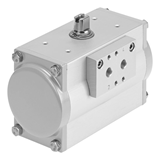By Rodney Appleyard - industrySearch.com.au
These are the observations of Clyde Campbell, the managing director of Machinery Automation and Robotics, who presented a speech about this rising trend on November 8th, at the monthly Institute of Instrumentation, Control and Automation Australia meeting.
Traditionally, robots have been used mainly in the automotive and welding industries, but he is finding fresh interest these days from many different manufacturers who have changed their attitudes towards robotics and automation in recent years.
Filling in empty roles
Campbell says that the meat and livestock industry, especially, cannot find people who are keen to work under wet and dirty conditions, so they are beginning to use robots to do this work instead.
“The driving forces in manufacturing have changed quite dramatically over the last 3 years. The availability of labour has become a number one priority because kids who come out of school these days do not want to work in a dirty factory long-term.”
“This is a big challenge currently facing the industry, especially in regards to heavy work. These kids generally work in a factory for about two years only so they can earn enough money to go to university or travel the world.”
According to Campbell, the meat and livestock industry generally has a turnover of between 30%-130% every year.
“The meat industry used to pay better than other jobs. However, the industry has gone sideways while every other businesses have incrementally grown. You can’t blame people for not working in this industry if they can get paid the same amount in a more comfortable, usually office environment. And the industry is very hazardous too.”
There used to be a time when the unions would not want robots involved in manufacturing because they feared that they would push people out. But with unemployment in Australia as low as six percent, these robots are becoming useful replacements. Campbell says that the unions are more concerned now about how the robots can save people from injuries.
“Many people from China and Afghanistan have been called in to work on machines in Australia, but they have a different build to most Australians. I’ve seen many of them trying to pull things down and they just end up hanging in the air. The robots offer more power to get the job done more quickly and safely.”
Increasing Productivity
These robots are not only filling up empty vacancies, but they are also offering greater yields and more efficiency in the workplace at cost effective prices. Campbell has found that companies are willing to pay half a million dollars for robots in return for increasing their yield by as little as a quarter percent.
He believes that robots offer better accuracy and care in the manufacturing environment, which is good for manufacturing because it means that the quality of each product can be enhanced.
“The challenge for most of our industry in Australia is to remain competitive in the world market when labour and materials can be much cheaper. Robots can strip away any carelessness and damage to products caused by people and they are much more reliable and quicker too. In some environments, a combination of robots can sort through 2000 cans in a minute, and one robot in the meat industry can pick 120 sausages in one minute too.”
Robots have advanced rapidly in functionality over the last few years, whilst the price has been coming down for them too. There are robots available now that can operate at –30 degrees without any protection. In the past, a robot would need a heated bag around it to allow it to survive in those conditions, and oil leaks would occur as soon as it reached a certain cold temperature. These robots are currently being used in an ice-cream factory in U.S. to provide a very high quality product.
One of the key ways that Campbell says that people can be persuaded to use robots to help their industry compete on a world stage is via a 3D simulation of the robots in action.
“We show people 3D simulations of the robots in action in their industry so they can analyse how the engineering works; how they operate/interact in the room; how they can meet OH&S requirements and how productive they can be too. This is very effective in the boardroom and at the management level. People are not so scared of robots as they used to be. They are more interested in how they can be used to improve their business environment, reduce downtime and overheads.”
OH&S advantages
Another big advantage involves occupational health & safety. The use of robots instead of people obviously reduces the risk of humans being hurt. In addition, many machines are being designed with the ability to sense blood to prevent hands and fingers from being cut off when manual workers use high-powered cutting machines. They have the ability to stop cutting within 5 milli-seconds once they sense skin or blood on the cutter. This means that a worker can end up with a small bruise instead of a lost limb.
Robots are still used mainly within the automotive and welding industry, but they are also becoming more common with meat and livestock, timber, packaging, materials handling and confectionary businesses too. Campbell predicts they will be used even more widely in the future, for the purpose of fruit picking, for example, to ensure that good quality fruit can be gathered more quickly to increase the yield. It seems that robots are already increasing productivity around Australia and this will eventually help to defend these industries against worldwide competition going forward.


